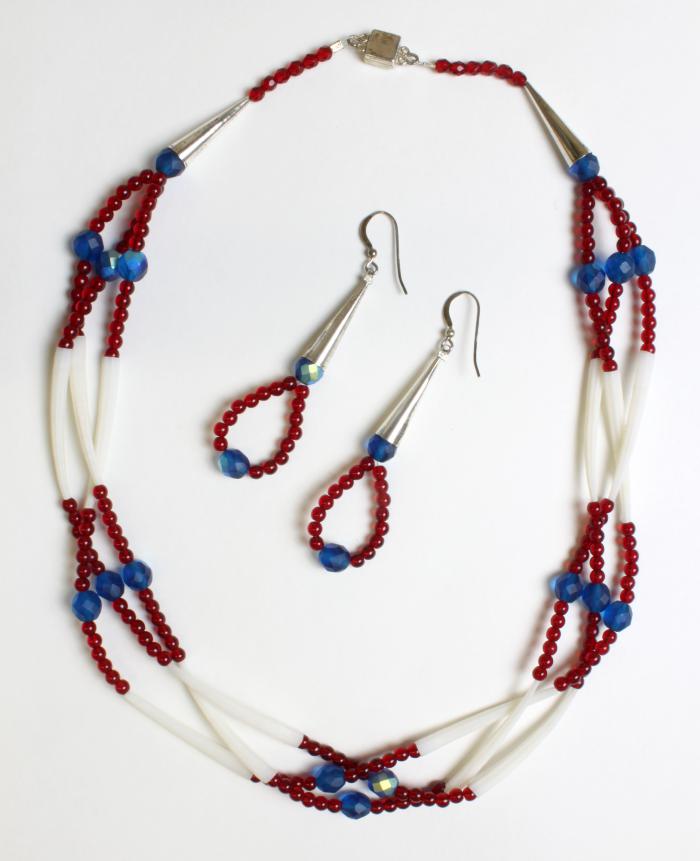Necklace — Uyamillquaq, PisiRkat (N), Pinguat (S)

In classical Alutiiq society, jewelry was an important means of social and personal expression. Decorative lip plugs, nose pins, ear ornaments, bracelets, armbands, belts, pendants, and necklaces were worn by both men and women, providing outward signs of the wearer’s place in society. Jewelry helped to indicate wealth, social standing, and passage through life events like coming of age or marriage.
In the historic era, Alutiiq people made necklaces from colorful glass beads imported from European factories by fur traders. They strung the beads on lengths of animal sinew and tied multiple strands together to create jewelry. In earlier times, the Alutiiq formed beads by mixing clay with seal oil or by carving them from shell, coal, stone, bone, ivory, or amber. A necklace collected in Kodiak in the nineteenth century features more than three hundred tiny bird claws set into each other to form small loops.
Children wore a different type of necklace, referred to today as a spirit pouch. At birth, a midwife dried the child’s amniotic sack or a portion of the placenta and placed it in a small pouch made of hide or cloth. The child wore this pouch around the neck as a protective charm for comfort and security. As the sack and placenta protected the child during pregnancy, they protected him or her in life.
